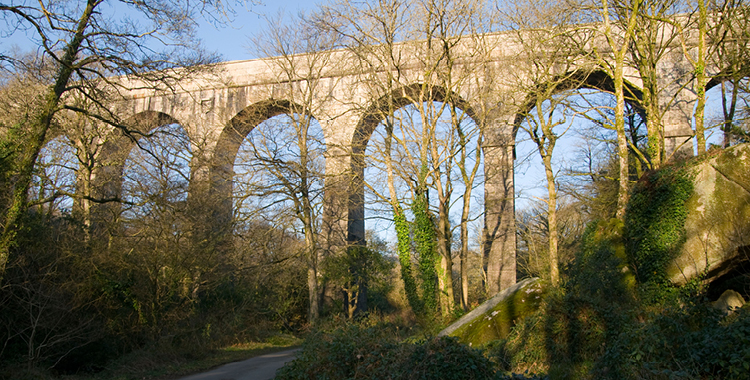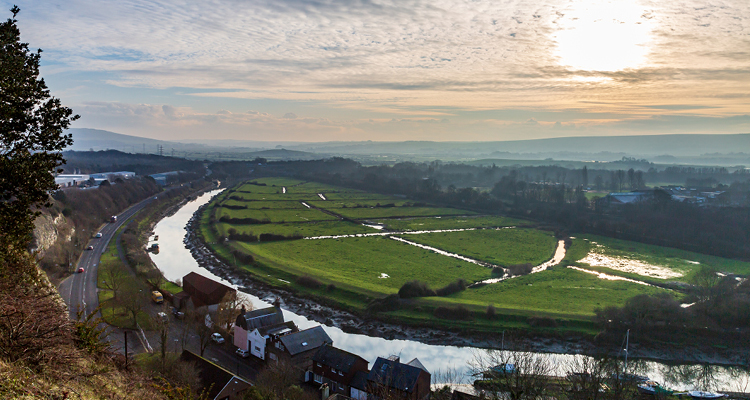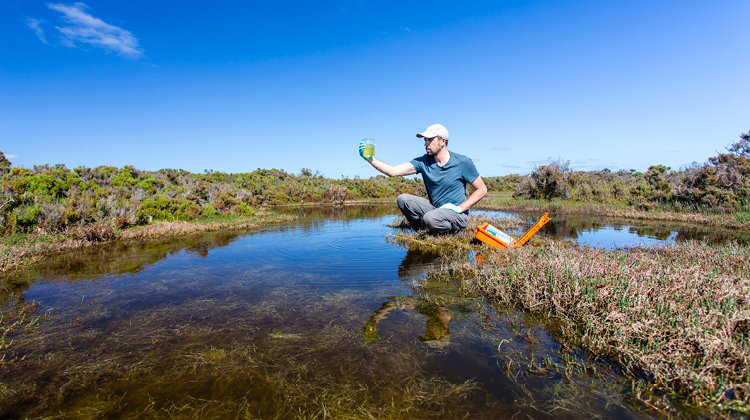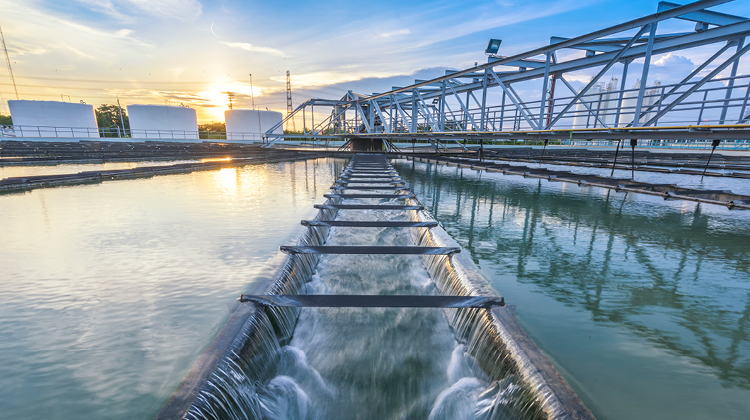South West Water’s Jargon
Buster
Baffled by ‘biodiversity’? Confused by what ‘catchment’ means? We’re keen to make sure every one of our customers understands what we do, and why we do it, so we’ve put together a list of some of the most commonly used terms in the world of water, and what they really mean. Take a look - and remember, we’re always happy to answer any questions you may have.
Aqueduct: A man-made structure which allows a canal to cross over a road, river or
valley.

Bathing waters: Beaches, lakes or ponds that are used by a large number of bathers and have been designated under the UK Bathing Water Regulations (2013)
Biodiversity: The whole variety of plant and animal life in a particular habitat.
Catchment: A catchment is an area of land where water collects when it rains, As the water flows through the landscape, it finds its way into streams and down into the
soil, eventually feeding the rivers.
Combined sewer: A sewer system that carries both household and industrial sewage and stormwater runoff.
Combined Sewer Overflow (CSO): The discharge of a mixture of storm water and domestic waste when the capacity of a sewer system is exceeded during rainstorms.
Dam: A barrier constructed across flowing water that obstructs, directs or slows down the flow, often creating a reservoir or lake.
Discharge: a measurement of the amount of water which flows past a single point over a period of time. For instance, this can apply to flow from a pipe to a stream, or from a stream to an ocean.
Downstream: The flow of rivers and streams towards the sea. Our Downstream Thinking programme is aimed at preventing sewer flooding and pollution by building sustainable drainage systems (SuDS) in towns and cities, and working with other
agencies to find solutions to problem flooding areas.
Ecosystem: A biological community of organisms such as plants, animals, fish, and natural resources, which interact and depend on each other for survival and wellbeing.
Floodplain: Flat land next to a river which is covered by water in times of flood.

Groundwater: Water which is held underground in the soil or in rock. Groundwater moves slowly to the lowest points, such as rivers and lakes.
Outfall: The place where water which has been treated by a wastewater treatment plant is released into the environment.
|
Pressure sewer: A system of pipes through which wastewater can be pumped upwards to a higher point.
Qualitative water assessment: A way of measuring the visible or aesthetic characteristics of water.
Quantitative water assessment: A way of measuring compounds and contaminants in water in order to determine its quality.
Peak flow: The highest flow expected in a wastewater treatment plant at any time. This is especially important at times of high rainfall, storms or long periods of wet
weather.
Run-off: This is rainwater which runs off the land into streams, ponds, lakes, or other surface water. Run-off which passes over agricultural or industrial land can take pollutants such as pesticides or animal waste with it.
Reservoir: A natural or artificial lake where water is collected and stored until needed for irrigation, recreation, providing water supply for domestic or commercial use, hydroelectric power or controlling water flow.
Sustainable Drainage Systems (SuDS): The natural landscape soaks up rainwater and reduces the amount which goes into the sewerage system. Sustainable Drainage Systems are man-made features which do the same thing. Examples include
permeable paving, retention basins, reed beds, ponds, wetlands and water butts.
Sewerage: The whole system of collection, treatment and disposal of waste in the water.
Sludge: The semi-solid residue which collects during the water treatment process.
Treated water: Water that has been processed by a treatment facility so that it is of a good enough standard to be put into the distribution network.
Upstream: The stages of water management which don’t directly involve the customer, i.e. the collection of water and sewerage, treatment, and distribution. Our Upstream Thinking programme involves working with partners in industry and agriculture to keep pollution out of the rivers.
Water monitoring: Ongoing sampling and analysis of the water in rivers, streams, the ocean, and the domestic and commercial supply, to improve and maintain quality.

Watercourse: Any river, stream, ditch, drain, cut culvert pipe, dyke, sluice, sewer or passage through which water flows, other than a public sewer.
Primary treatment: This involves letting solid waste settle within wastewater after larger contaminants have been filtered out. This is done by passing the wastewater through several tanks and filters.
Secondary treatment: In the second step, bacteria are allowed to break down the organic parts of sewage wastes; this is usually done by bringing sewage and bacteria
together in filters or in the sludge process.
Tertiary water treatment: This is the final stage of the wastewater cleaning process. Inorganic compounds, bacteria, viruses, and parasites are removed to make the
treated water safe to reuse, recycle, or release into the environment.

|





